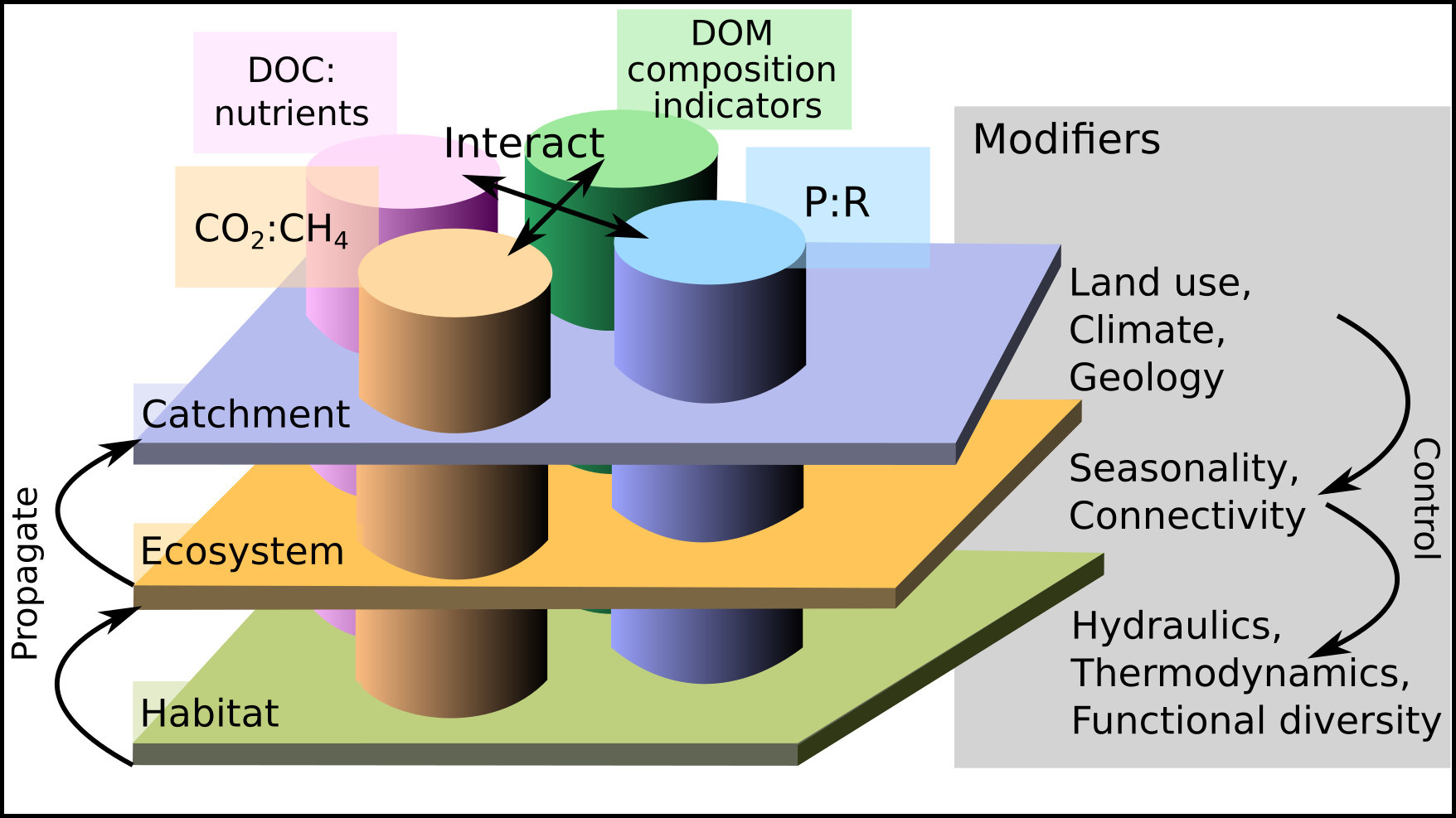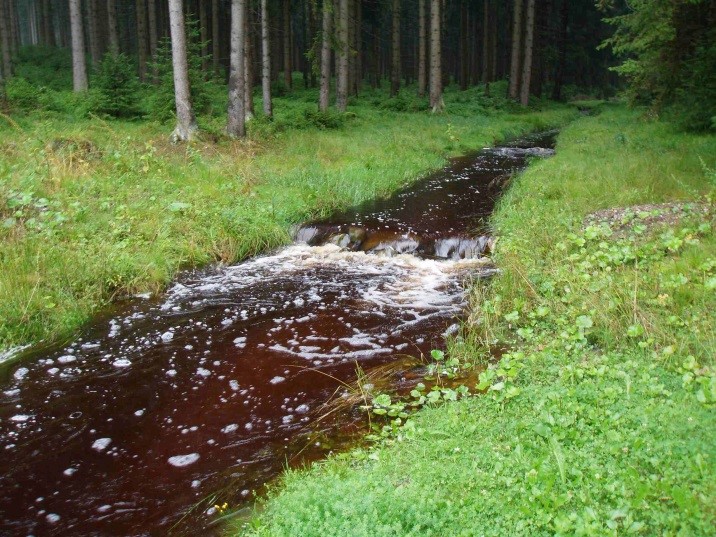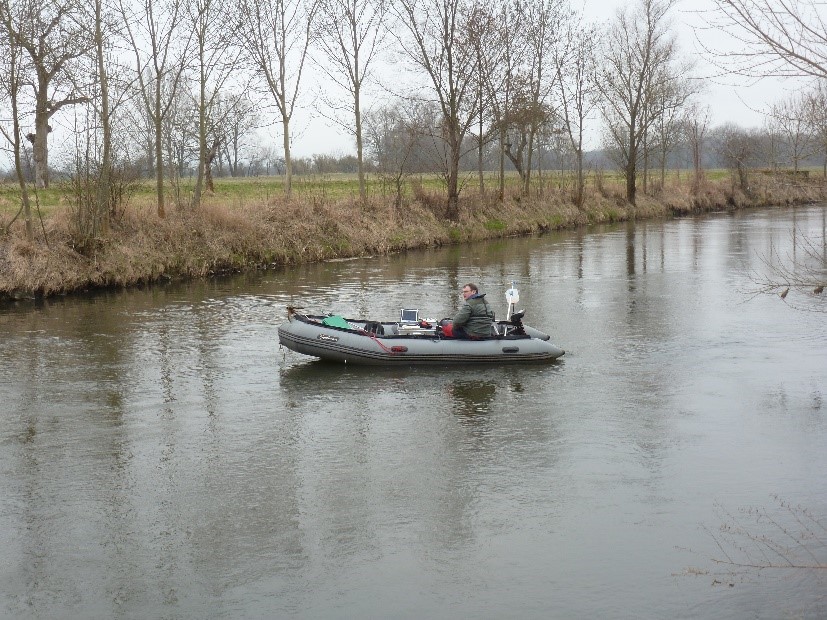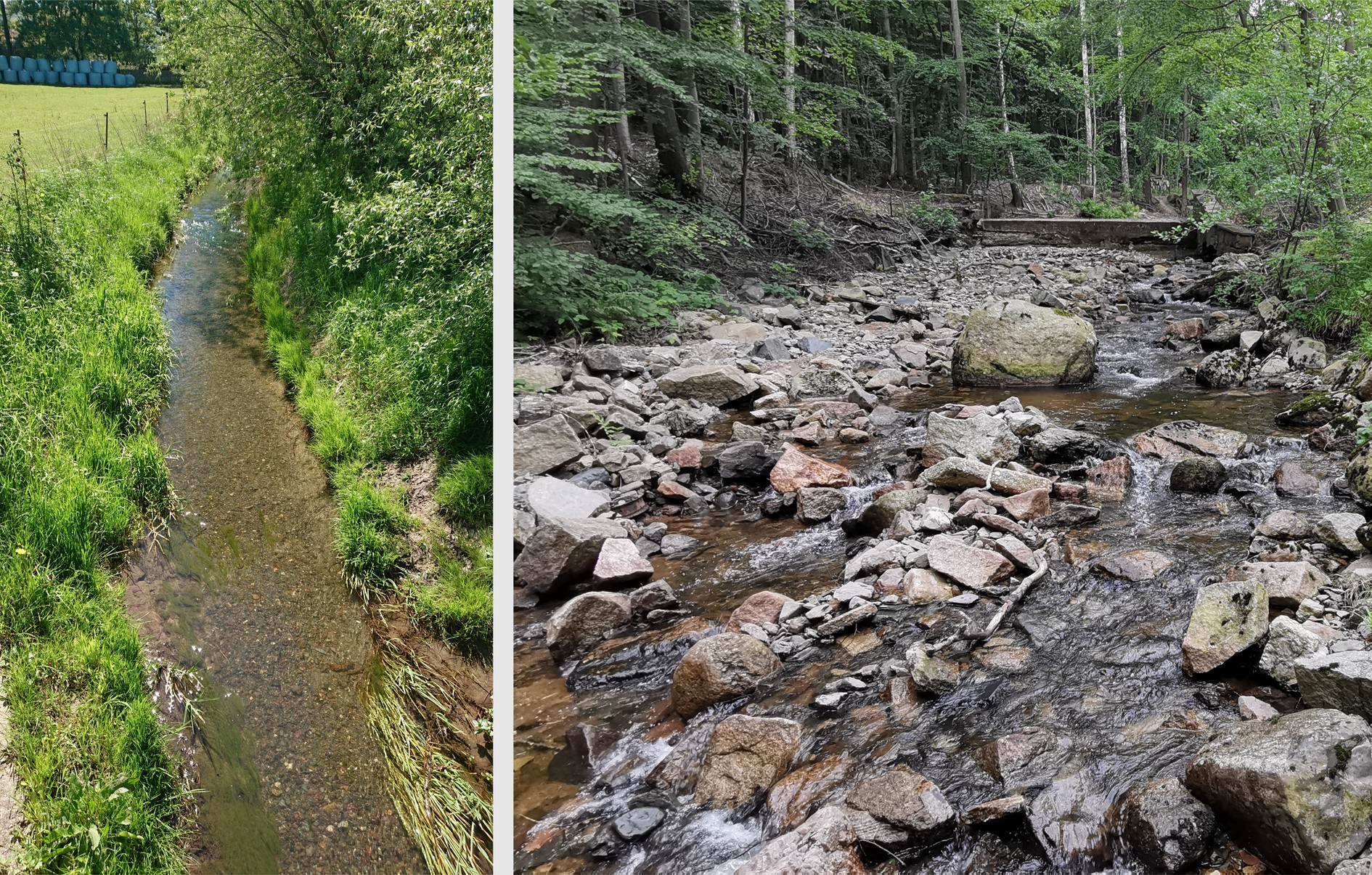
 DECIPHER: Drivers of macronutrient dynamics and greenhouse gas emissions along flow paths
DECIPHER: Drivers of macronutrient dynamics and greenhouse gas emissions along flow paths
Platform Project – PP2.5
Ecosystem functions link ecosystem health and services. We hypothesize that few core drivers can describe the mechanisms behind those functions. By analyzing these drivers and their effect on ecosystem processes on different scales from headwaters to the North Sea we aim to derive process knowledge as a basis for improved environmental monitoring and predictive modeling of ecological responses.
Background and scientific challenge
Numerous ecological and biogeochemical processes are affecting aquatic ecosystems along the flow path from soil to sea. Classical monitoring and assessment strategies are not sufficiently addressing this complexity of interacting processes. This is both because we are lacking process knowledge and practical indicators on different temporal and spatial scales.
Aim
We hypothesize that with a set of few innovative drivers we are able to decipher the central mechanics behind aquatic greenhouse-gas emissions, eutrophication, carbon processing, and nutrient processing. We will analyze these drivers along flow paths from headwaters along streams to the sea. With this approach, we will be able to link driver-response patterns at habitat and ecosystem scale, and will link those patterns to the land use patterns at catchment scale. Our final aim is to provide a set of drivers which will simplify environmental monitoring and provide the basis for parsimonious modeling approaches across scales.

Contents and envisioned outcome
The project is organized in four core studies:
DOC/nutrients: Understanding the stoichiometry of carbon, nitrogen and phosphorus processing and secondary ecosystem effects in freshwater ecosystems
It is becoming more and more apparent that the biogeochemical cycles of carbon (C), nitrogen (N), and phosphorus (P) in aquatic ecosystems cannot be treated separate but are closely linked. In this project, we want to link C, N and P using the ecological stoichiometry approach, to understand effects of shifting C:N:P ratios on C, N and P cycling and secondary effects on metabolism, eutrophication and GHG emissions. This will be done by investigating:
- Assessment of ecosystem responses (eutrophication, metabolism) to a shift in C:N:P ratios in forested and agricultural streams, and in shallow lakes
- Habitat-specific responses to changing C:N:P ratios in streams
- Links between C:N:P ratios and long-term fate of nitrate and phosphate
Dissolved organic matter (DOM) composition indicators: Linking DOM quality and ecosystem processes
Recent advances in analytical techniques are showing more and more that and how not only the quantity but also quality of dissolved organic matter (DOM) affects aquatic ecosystems. By analyzing DOM quality in combination with ecosystem processes and environmental conditions we aim to
- Link molecular diversity of DOM to microbial diversity
- Investigate DOM transformation at different scales and hydrological conditions.
- Apply joint field and experimental approaches to bolster the mechanistic basis of the DOM process indicators.

Carbon dioxide / methane ratios: Scaling aquatic greenhouse gas emissions
Streams and rivers are increasingly recognized as important greenhouse gas (GHG) sources despite they represent only a small fraction of the terrestrial surface. Yet, there are very large uncertainties in the estimates of GHGs emission to from rivers. This is caused not only by data scarcity but also a limited understanding of process-based scaling from local to broader scales. In this project we aim to broaden our understanding on how both local and routing controls (a gradual flow-integrated configuration) manipulate simultaneously the spatial patterns at different scales by
- Assessing the relative importance of small-scale (specific sites) and large-scale (river continuum) variations of GHG concentration in lotic systems
- Performing high frequency monitoring of GHGs at different scales to assess regulating mechanisms
- Developing scaling laws that could be used to model the spatial pattern of GHGs in streams and rivers

P:R ratio: Linking aquatic metabolism to aquatic ecosystem state
The ratio of O2 production to respiration (P:R) may be a central indicator of aquatic ecosystem state, crucially linking to ecosystem health and restoration. Recent advances in probe design and detection of metabolism via Bayesian modelling allow for a fast and accurate evaluation of long-term P:R ratios. Yet, we have to learn a lot about these links as the current literature still largely depends on older short-term metabolism evaluations. This needs to be linked to short-term factorial experiments to better understand the driving mechanisms behind changes in whole-ecosystem P:R ratios. We plan to
- Assess the seasonality of P:R relative to stream order, buffer zone characteristics and catchment land use
- Link metabolism to ecosystem health
- Link metabolism to climate change to predict future changes of P:R
- Assess the value of P:R as an indicator of ecosystem state and success of ecosystem restoration
 Two streams with contrasting land use for which we collected more than one year of 10-min resolution dissolved oxygen measurements (photo: UFZ).
Two streams with contrasting land use for which we collected more than one year of 10-min resolution dissolved oxygen measurements (photo: UFZ).
